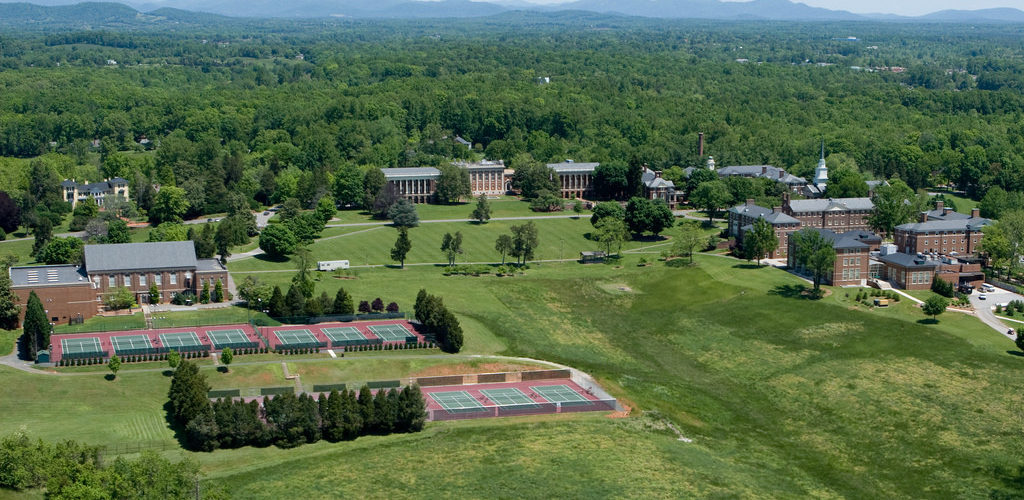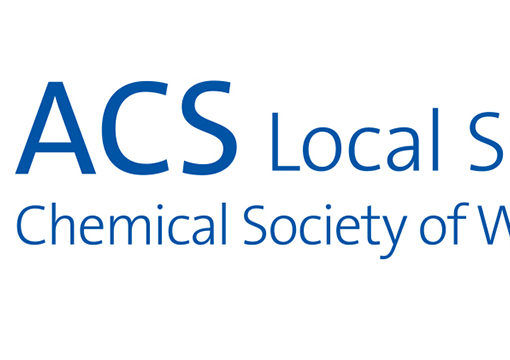By Jill Granger, Former Associate Dean of Academic Affairs and Professor of Chemistry
On the days that followed the Board of Directors’ announcement that Sweet Briar College was slated to close, I was gripped with following Facebook and watching my inbox blow up with messages from around the world. I felt the global Sweet Briar community collectively shudder that day.
Fast forward to August when I had the great pleasure of visiting the College at the end of the first week of classes. That date, August 25th, was particularly poignant because it was the day that was slated to be the last day of operation. Instead, I was visiting with students in the cafeteria, laughing with friends on the sidewalk, and witnessing a community pulled together again.
I’ve referred to Sweet Briar as a recent contender for Most Hugging Campus. Initially, the hugging and the crying were for consolation and support. I recall coming out of an early spring meeting with members of the Board of Directors, feeling like I might collapse from the stress and strain, and there on the sidewalk outside the library was a group of colleagues and friends, holding me up with a group hug in solidarity, our tears echoing the gray rain of the dismal day.
When I first started going off on job interviews in the spring, I had to remember not to hug every person I came across, as had become the custom at Sweet Briar. I had to remind myself that this was the outside world where hugging was not the social norm and where people talked about a variety of topics, not just about closure and court cases. In sunny August, it was wonderful to be back to Sweet Briar, to be greeted with energetic and enthusiastic hugs all around.
There is a bubbly energy on campus now, a sense of hope. The students are excited to be at Sweet Briar. It’s the place they most want to be and none that I talked to were taking it for granted. The staff and faculty are equally happy that the campus is alive, and there was a sense I got of an esprit de corp that had been rekindled. People were talking about challenges, but not as insurmountable, only as problems to be solved (to paraphrase the new president, Phil Stone) and there was a keen sense of appreciation that I heard as they talked in terms of the sacrifices and devotion of the community working together to move ahead.
While I was there for my visit, I still felt the presence of the Alumnae very strongly. They continue to provide spirit-lifting messages and treats to the campus community. They enliven and enrich the physical and social landscape with their presence, their energy, and their gifts. Current students remain wowed by the alumnae’s passion and persistence, and are somewhat flummoxed and also entertained when faced with intergenerational ideas about what it means to be a Sweet Briar woman. Faculty continue to take pride in the alumnae’s accomplishments and cheer them on in in their quest to “work for the good and work for the right,” a mantra of the students and alumnae as they “holla holla holla” in boisterous rousing cheers.
This isn’t to say everything is perfectly restored now. A quick trip through the Guion Sciences building and you can see that there are offices which seem abandoned. Many are fully appointed but empty, where the resident faculty member has taken a leave of absence to fulfill a contract position secured while the litigation was in flux. Other offices are starkly emptied or repurposed. In some, there are new residents in adjunct faculty who are there to support the curriculum during the transition. I now have dear friends and colleagues far flung to Massachusetts, New York, Minnesota, Florida, Indiana, Missouri, Ohio, and Maryland. I’m trekking a 6-hour commute from North Carolina back to Virginia on available weekends to spend precious time with my husband and 15-year old daughter.
Driving back to North Carolina this past weekend, the never-ending rain suited my mood but made the drive extra long, both figuratively and literally. I don’t like being separated from my family, or living alone, or cooking for myself, or any of the hundred other things I do without my family every day. But at the same time, it makes me happy to know that we are doing what we can to help with the College’s reconstruction by having my husband, Rob, working alongside all of those who have sacrificed to be there this year. Living in a liminal space is uncomfortable, the unknown future is scary, but where we are now is so much a better place than where we were in March or April or May or June.
The accomplishments of the Sweet Briar Community in the last 70+ days are incredible and unprecedented. Typically the curriculum for the fall semester is developed during the winter and early spring months of the academic year that precedes it, and staffing is made to support that curriculum. Once complete the new catalog is uploaded and students, normally, go through advising and register for classes during the late spring and early summer. In a typical year, this happens concurrently with the final stages of new student recruitment, finalized in May, with those students registering for classes in time to make final staffing decisions. Normally, faculty members plan and prepare classes over the summer months, and new student orientation is scripted and rehearsed.
In this year, at the time that the new President took office in early July, there was no planned curriculum, no staffing, and no students. Faculty and staff members rallied with alumnae support and Phillip Stone’s leadership to accomplish five months of work in five weeks: assessing the student enrollment (including re-recruiting the lost first-year class), planning the courses and curriculum that would be needed to support those students, evaluating staffing needs in the faculty, and making hires quickly.
Effects on the staff were equally widespread with even more gaps needing to be filled. Sweet Briar was not overstaffed to start with, and many staff members were wearing multiple hats already and had little redundancy or cross training. It has been heartening to see staff move into different positions and rise to the challenge of figuring out how to make things work during this time of extraordinary transition.
All the while, the alumnae supporters have continued to rally, planning event after event, and going to the wall to assure that every program celebrates what is most special about the Sweet Briar community. One alum, now working as a quality assurance chemist in Chicago, said to me, “You know that everything is good when you punch up HOME on your GPS and it takes you to Sweet Briar.”
I’ve been frustrated to find that there are a lot of people who, now that the headlines have faded, are not well informed about what happened at Sweet Briar in the last days of mediation and at the start of the semester. Too often people I meet say either something like ‘oh, so sad that it closed’ or ‘isn’t it great that it will stay open one more year’ when they find out that I was formerly at Sweet Briar.
And while the future is still uncertain, just a few minutes with a group of alumnae will assure you that they are stone cold serious about seeing the college into a stable future, a sentiment that is reverberated by the current administration and new board of directors. I hope that, once we’ve done the yeoman’s work of saving Sweet Briar for future generations, all of us involved in this process take the time to document the experience. To me, this has been a seminal moment in our history; we should take the time to record what it meant and why for those future generations as well.
Photo credit: Aerial photo of campus circa 2008, courtesy Sweet Briar College.




4 thoughts on “A New Hope for Sweet Briar College”
That “one more year” thing is highly annoying. That is NOT what the settlement agreement said, but those who like to take things out of context latched on to a few words in one sentence of a 63 page document. Context is everything.
The larger problem is that as many headlines faded, there is still a stream of a seemingly endless number of people who hold themselves out as experts, reporters, and, most shockingly, researchers, who continue to present only one side of the story, and they regurgitate the previous board’s spin as if it were gospel and established fact, even though a large portion of it was resoundingly debunked.
Good reporting, not to mention good research, involves looking at ALL the data, not half of it. It also involves analyzing the data in depth to find the facts and report on those facts. Sadly, in the lazy world of the modern media, too many journalists (and I use that term loosely) prefer to just copy and paste other people’s reporting, provide attribution for doing such, and then do absolutely nothing whatsoever to independently verify that what they are copying and pasting actually represents the facts.
It doesn’t take a guru to find the other side of the Sweet Briar story…or does it? I suspect a Google search for Sweet Briar guru would lead a person to the other side of the story: http://bfy.tw/2PTK
The Sweet Brair story is not over. The data will continue to be collected and be well documented…in perpetuity.
Well said, Jay! Thank you for this beautifully written piece about our Sweet, Jill. I can speak for many alumnae out there when I say we took for granted that SBC would be there forever, continuing to do what it does best and never feared for its survival – before now! But never again will we be complacent as a community and never again will we take our eye off the ball. This board and new administration must learn how to utilize us and involve us in the future of the college in more innovative and integrative ways- were not going anywhere AND we all need to learn how to trust again!
Jill: Thanks so much for this essay. It is great to see an article that emphasizes the positives, and recognizes what was so unique about what we accomplished, together, to get our school back and classes up and running. We (the BOD) have rolled out a plan (visit our website to learn about the Alumnae Alliance) to harness the amazing energy of our alumnae; not just their giving, but also to take advantage of their intellectual capacity and experience. Yes, as President Stone says, “the impossible is just another problem to be solved” by Sweet Briar women and their allies. We will do this. Come back and help us!
Thank you, Jill for the excellent essay on our history-making achievements. The previous administration of Sweet Briar College, as Jay Orsi correctly states above, was bent on closing the school; this small, ineffectual group continues to drum the one-note message that the college will survive another year–and that’s all. Their mistakes and failures were many, as is patently obvious now.
The greatest failure of all was their attempt to discount and discredit the alumnae. From the moment of the closure announcement thousands of women and a few brave men activated an unstoppable whirlwind of power to save Sweet Briar College. That these administrators and board members sought to negate the character, integrity, and intelligence of the alumnae who learned these qualities at Sweet Briar is preposterous.
The obvious extension of the unprecedented success of the Saving Sweet Briar movement should be the equally obvious worthlessness of the previous administration’s strategy. The college is alive and well, as Jill Granger’s essay makes clear. It will remain open in perpetuity, as Jay Orsi and Georgene Vairo explain. The current students and alumnae of all generations already hold the new president, Phillip Stone, and board in the highest esteem.
For everyone (except, apparently the media), the new message is abundantly clear: Never, ever, ever doubt the power of a Sweet Briar woman. We are Sweet Briar.